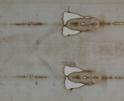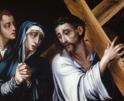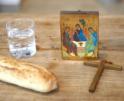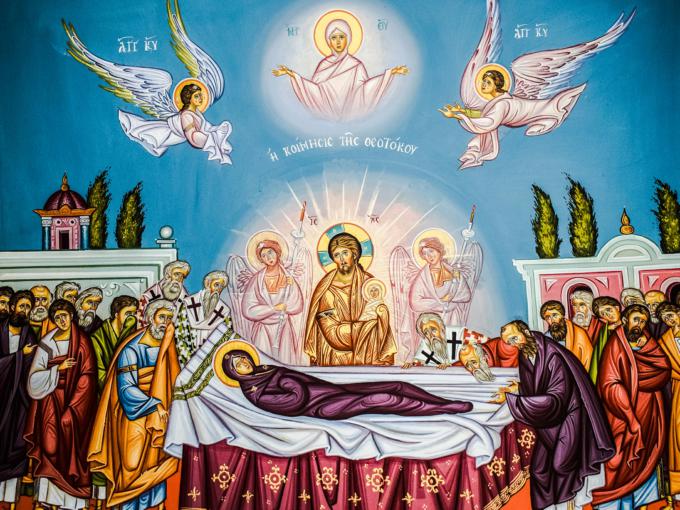
Spirituality
Most households are filled with stuff which no one can quite throw out. All the aunts and uncles show up, and they are there, even the loud ones, even the quiet ones.
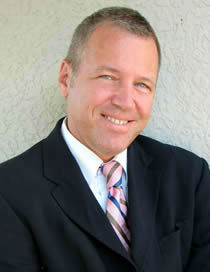
Pakaluk
What seems an accidental confluence of books can be providential, which is perhaps the best reason for reading several books at the same time.
Gregory of Tours, the late sixth-century bishop, perhaps best known for his "History of the Franks," also wrote a book of miracles, called "The Glory of the Martyrs." This book contains one of the earliest testimonies to the life St. John, the Gospel writer. (Hence my interest: I am writing a book on the Gospel of John.) Gregory reports that John, when he was about to die, descended into a tomb, which was then covered with dirt, after which he departed -- he died as it were deliberately, as does too the holy monk in the modern Russian film, "The Island."
John died in Ephesus, where he lived with the Virgin Mary for many years and was joined by Mary Magdalen. Their house was seen mystically by Blessed Anne Catherine Emmerich and then "rediscovered." Pope Leo XIII had a devotion to this place of dwelling and encouraged pilgrimages to go there.
"In Ephesus," Gregory writes, "there is a place in which this apostle wrote the Gospel that in the Church is called by his name. On the peak of this mountain there are four adjacent walls without a roof. John waited in these walls, praying earnestly and constantly beseeching the Lord on behalf of the sins of the people. It was granted him that no storm would threaten that place until he had completed his Gospel" (trans. Raymond Van Dam).
Gregory gives apparently the first account of the Assumption. It's interesting that the first two chapters of his book are devoted to the miracles of the Lord, and the third to the Lord's Resurrection and Ascension. "After the Lord's ascension ... the holy apostles of our Lord gathered with the blessed Mary." They shared all things in common; then, they went out their separate ways to proclaim the good news. But then immediately he tells about the Assumption as if it was the natural continuant of the Lord's miracles on earth.
"When finally the passage of Mary's life was completed, all the apostles gathered from their particular regions at her house. When they heard that she must be taken from (literally: assumed out of) the world, they all kept watch with her. And behold, the Lord Jesus came with his angels, and, after taking her soul, he gave it to the angel Michael and left." They placed her body on a bed, as if sleeping, and then put the bed in a tomb, keeping guard, expecting the Lord to return for it, too. "And behold, again the Lord approached them. He took the holy body in a cloud and ordered it to be brought to Paradise, where, after regaining her soul, Mary now rejoices with his elect and enjoys the goodness of eternity that will never perish."
Some details of the passage worth noting: the apostles reunite to be with Mary at her Assumption, apparently the only time they will be together again. (Mary must have been given intimations well in advance, which they believed, of course.) It's taken for granted that Jesus would return for Mary. Mary is identified with her body not her soul: "after regaining her soul," Gregory writes.
The early Church was close to Mary. It's astonishing that the first topic the Church discusses and settles, after the divinity of Christ, is the role of Mary as Theotokos, "the one who bore God himself." Apparently the Council of Ephesus, which settled this title in 431, met in Ephesus, deliberately because it was her town, in a Church of Mary, probably built for the council itself. This was only 400 years after the resurrection of the Lord. One says "only 400 years," because, without good communication and transportation, what took 400 years to unwind then would take 40 years today. It's as if the first thing on the mind of the early Church after Jesus was Mary.
One might connect Gregory's ease of thinking of the life of Christ in connection with Mary, with the many stories of miracles of the saints in his book. After all, the Christian imagination is supposed to be filled with lives, wonderful feats, and amazing voyages, above and beyond what is found in the Gospels. Those who mark out the words of Jesus in red ink, as if they alone are worth thinking about, are going in precisely the wrong direction. It was the apostles who added a book of their own deeds as the successor of the Gospels.
Protestant churches, sadly, are too often like those red-print gospels, bare and barren, rather than a vibrant household. A household is chaotic and exuberant (think baroque), goofy and crazy (think suburban gothic), or heroic or bare (think Romanesque). Most households are filled with stuff which no one can quite throw out. All the aunts and uncles show up, and they are there, even the loud ones, even the quiet ones.
Another book on my stack is the "Speculum (Mirror) of the Blessed Virgin," by St. Bonaventure. Its first chapter is devoted to "Ave." The second to "Maria." The next to "gratia plena." You get the point. (Thank God he was not writing on "most highly favored daughter!") From this book, one might infer that the Church can be the family it is supposed to be, only if the love of the Mother brings us together.
- Michael Pakaluk is Professor of Ethics and Social Philosophy in the Busch School of Business at The Catholic University of America. His book on the gospel of Mark, "The Memoirs of St. Peter," is available from Regnery Gateway.
Recent articles in the Spirituality section
-
No line-drawingMichael Pakaluk
-
Physician-assisted suicide is a slippery slopeCardinal Seán P. O’Malley
-
He saw the cloths and believedBishop Robert Barron
-
God's instrument for viewing the crucifixionMichael Pakaluk
-
QuinquagesimaMichael Pakaluk



